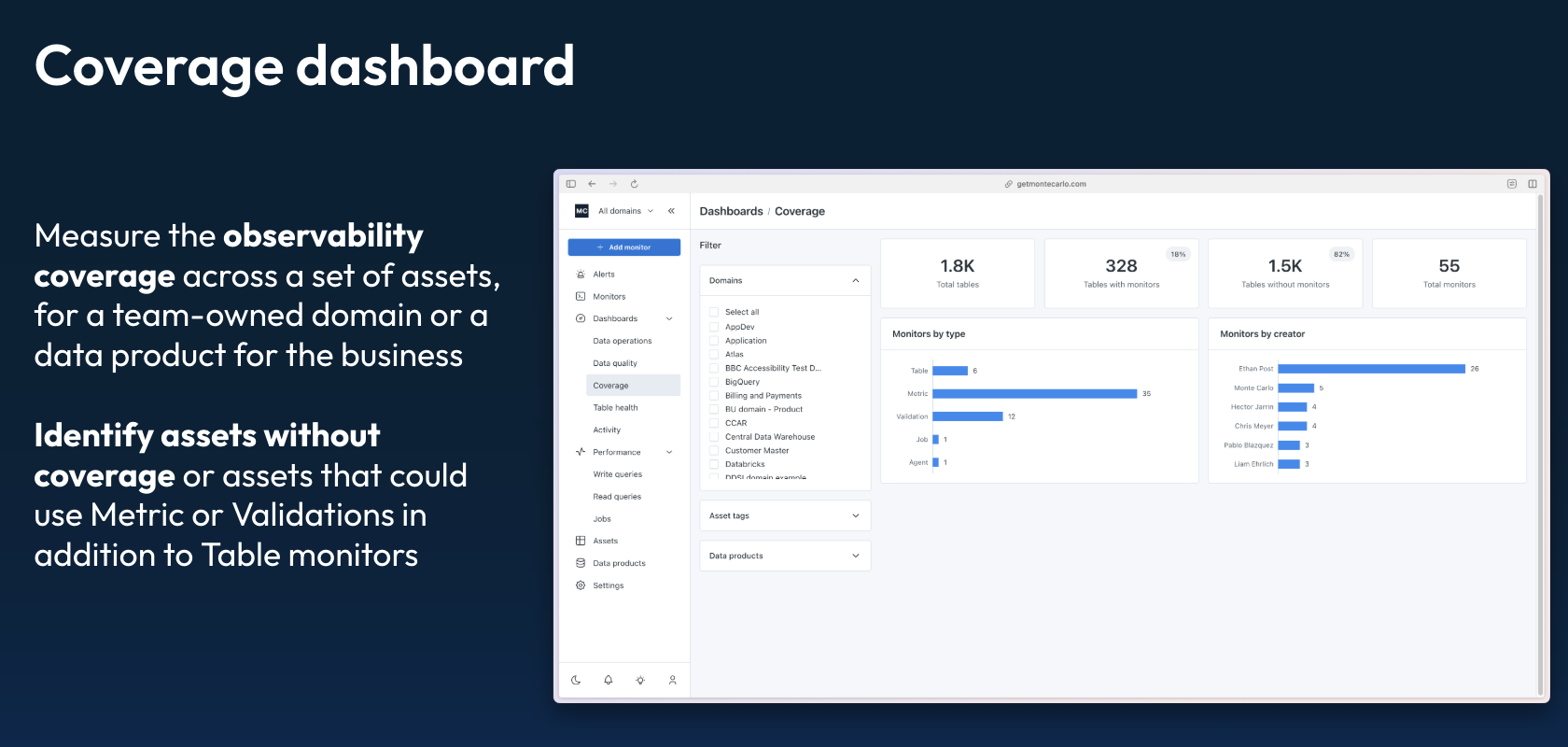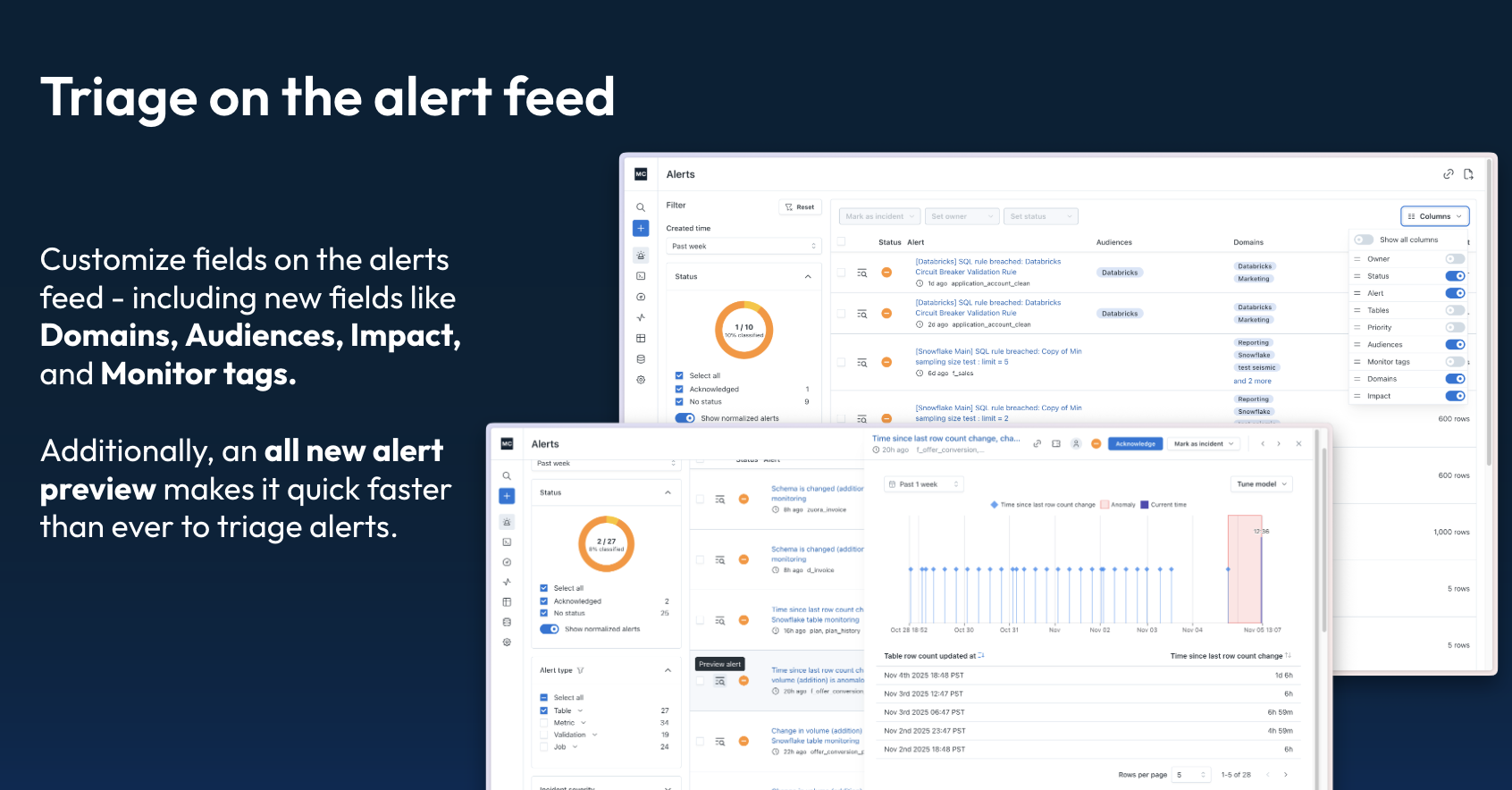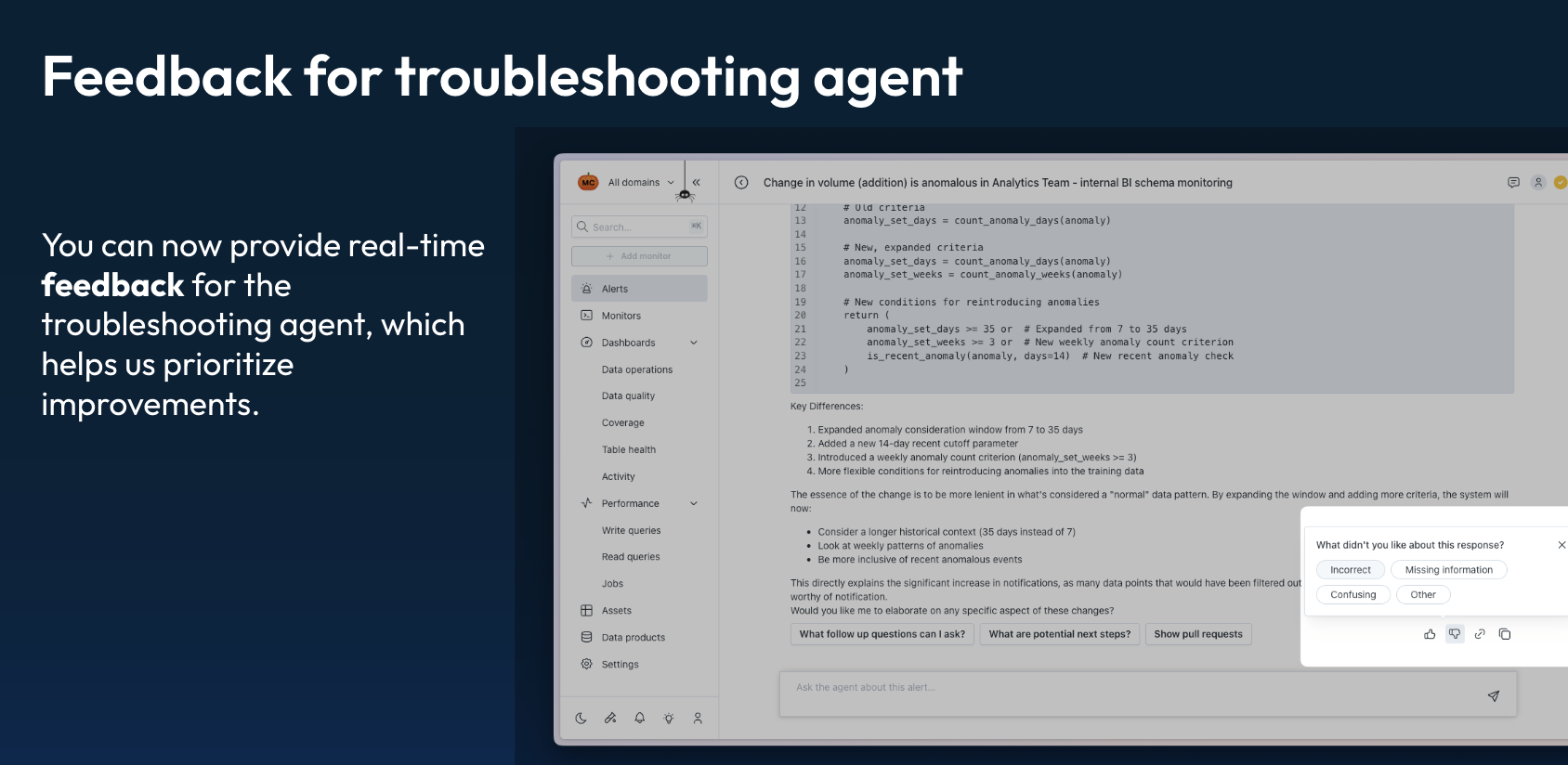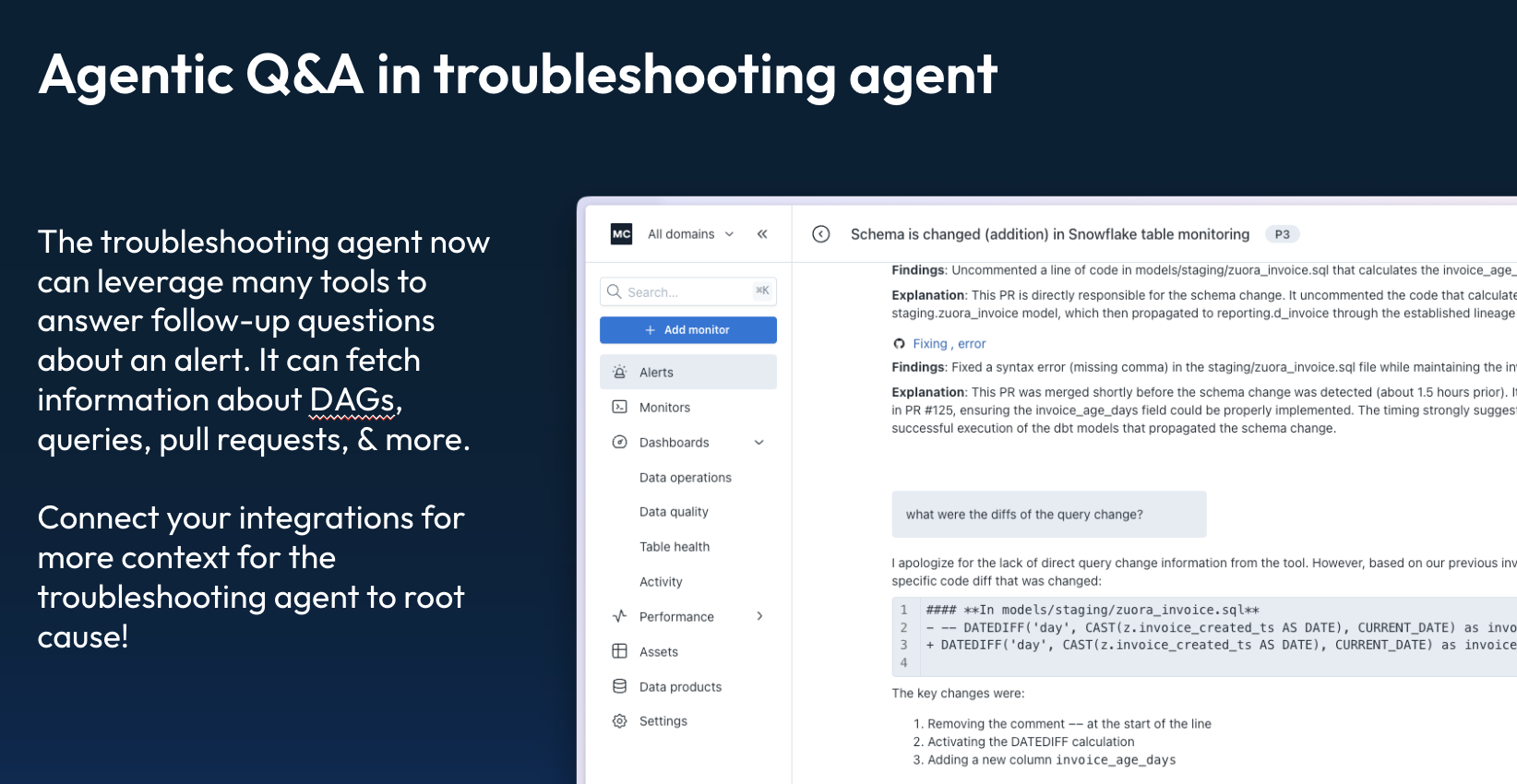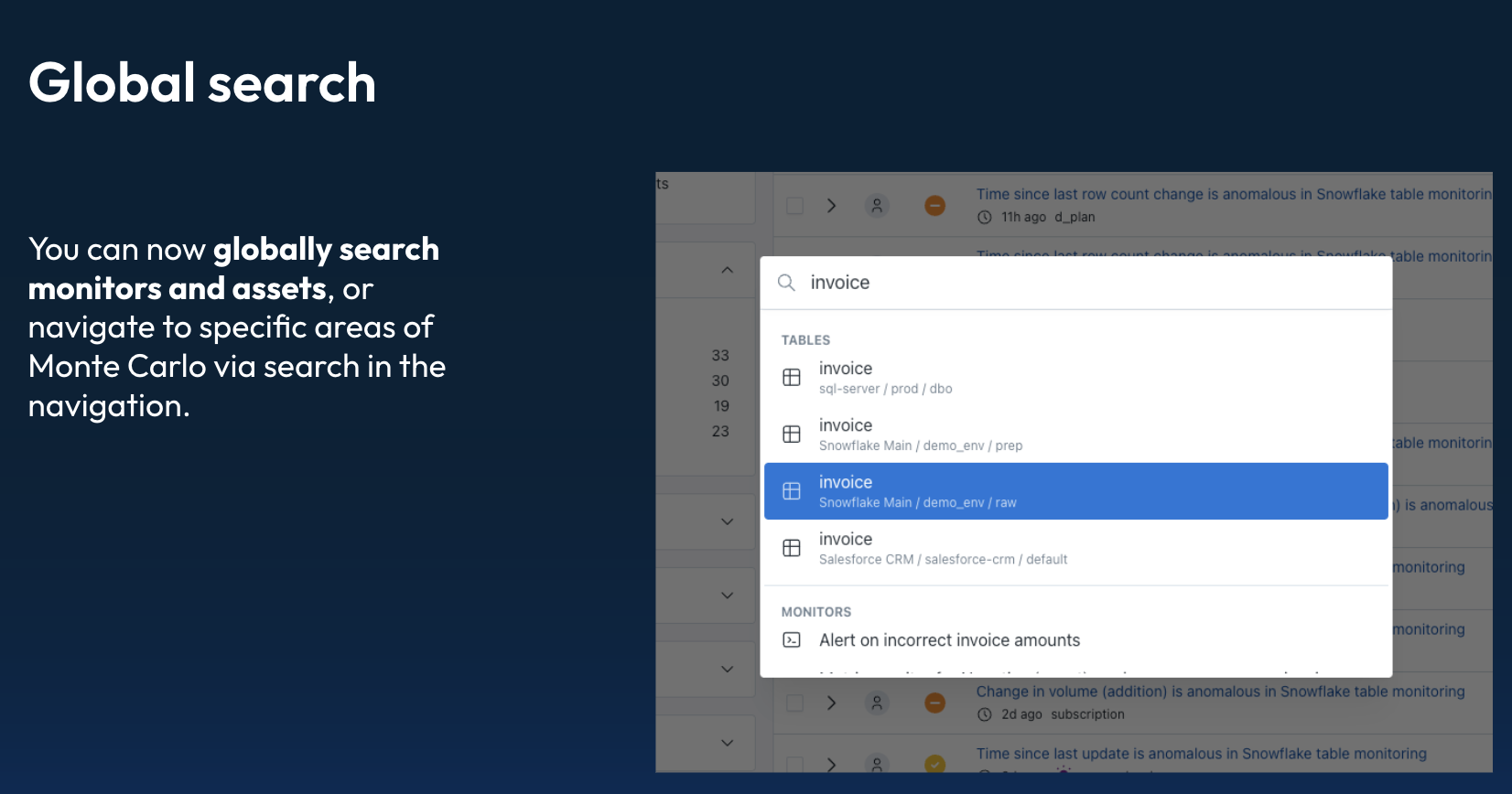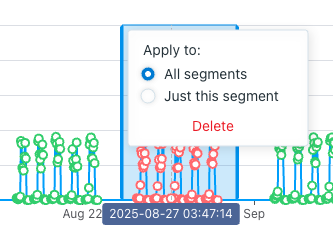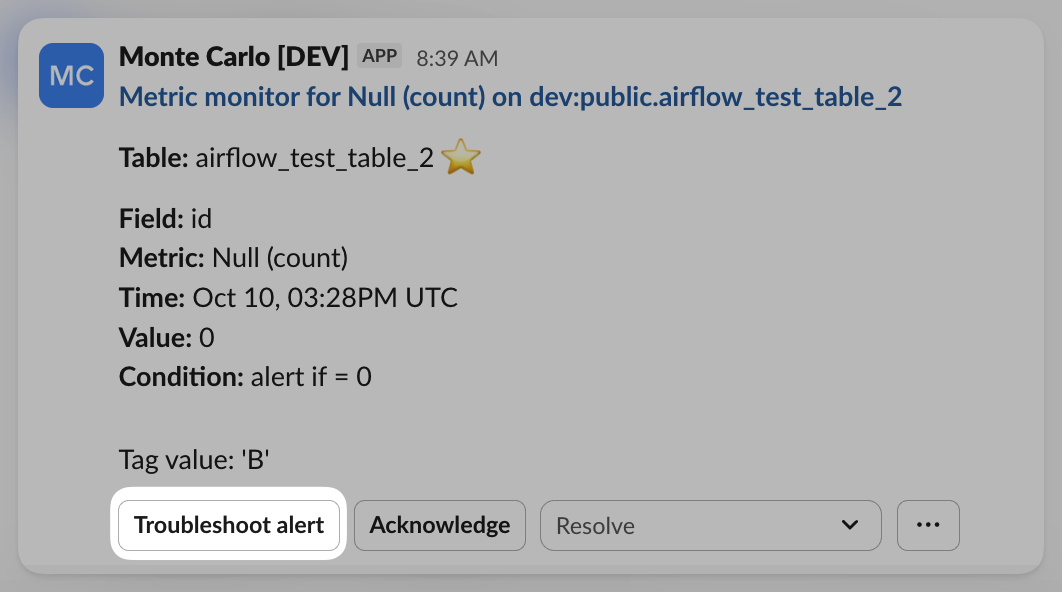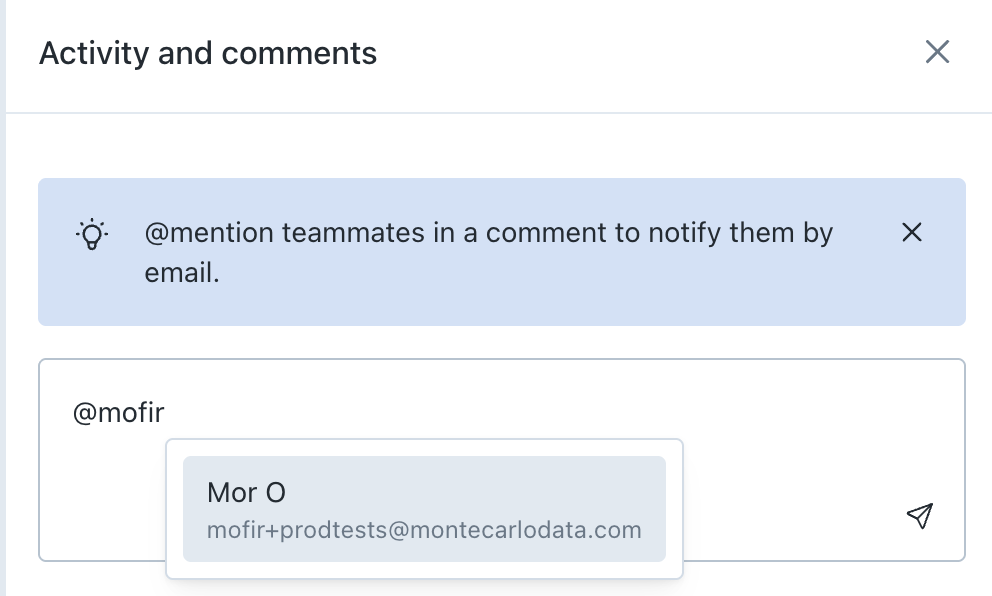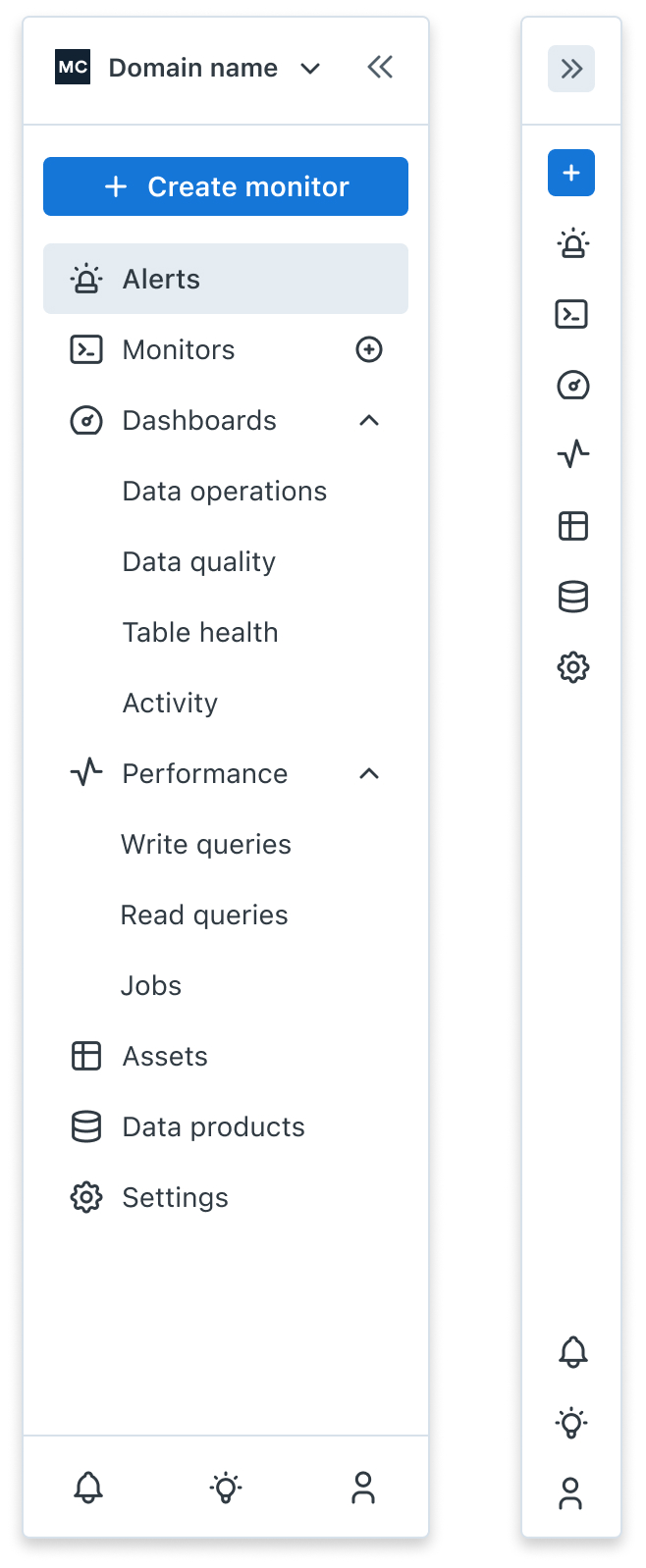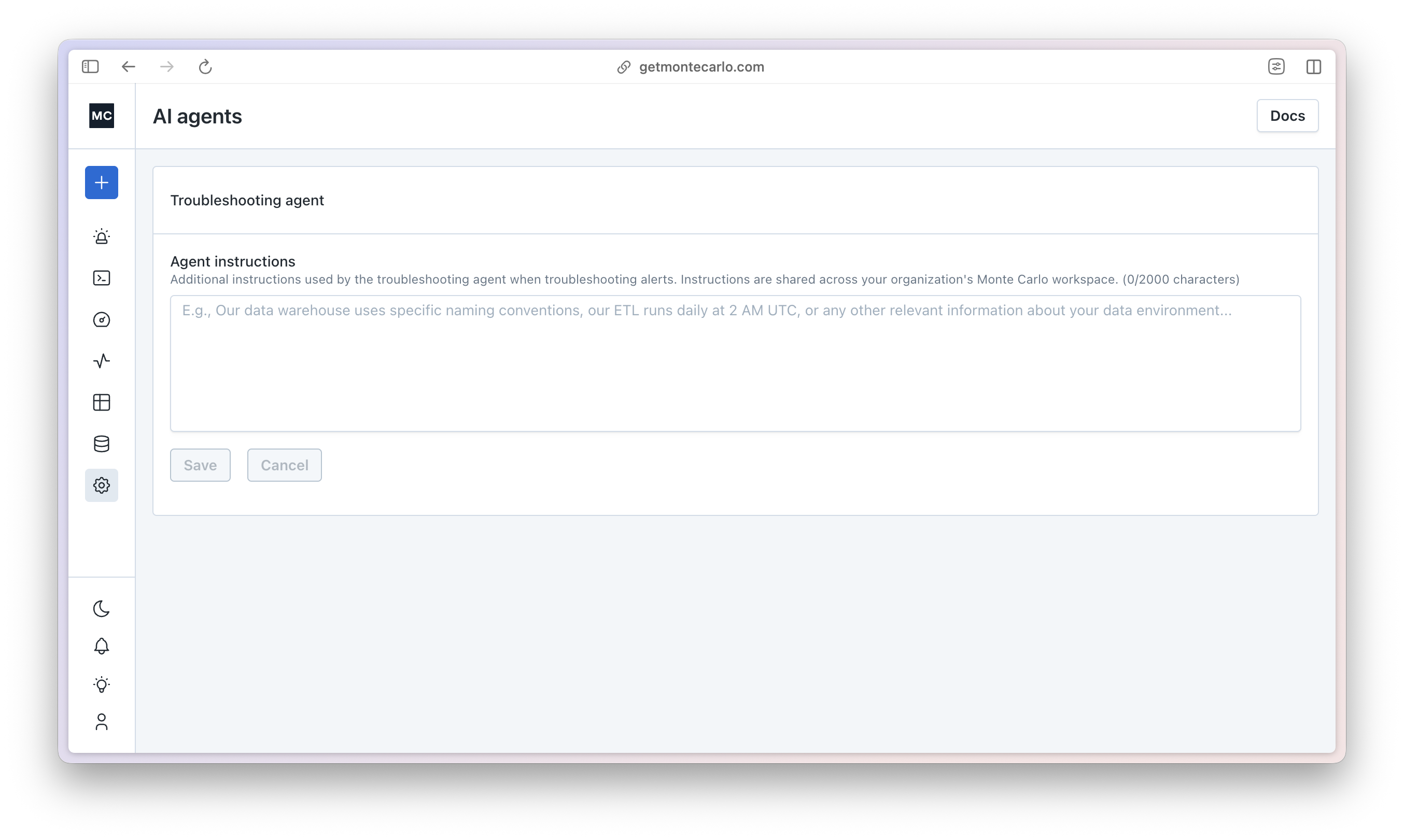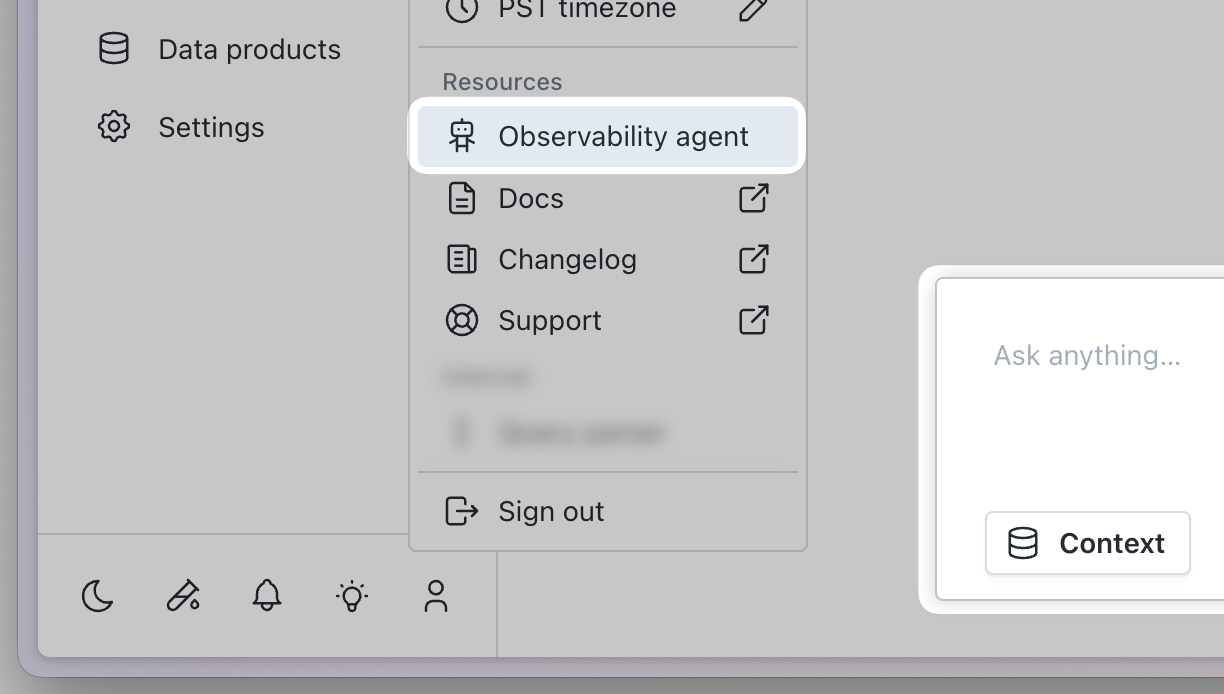
The observability agent is more than just a chatbot - it’s brings the power of the tools in our MCP Server to users out of the box — no API keys, no setup, no configs, no external tools. Just ask.
The observability agent also partners with our support assistant, trained on our public documentation, so you can get answers to product questions directly in Monte Carlo. Learn more about the support assistant.
The observability agent is in public preview. If necessary, both the observability agent and support assistant can be disabled in the AI agents settings page. If AI features were already disabled, the observability agent will be disabled by default.

